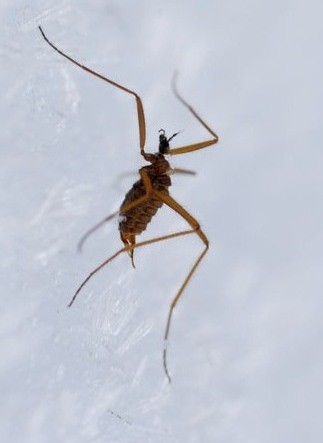Chionea lutescens
(Chionea lutescens)

Description
Chionea lutescens is a species of fly. It was first described by Lundstrom in 1907. Chionea lutescens belongs to the genus Chionea, and family Limoniidae. Chionea is a genus of wingless limoniid crane flies. It consists of two subgenera, the holarctic Chionea and palaearctic Sphaeconophilus. About 40 species are currently recognized in the northern hemisphere, but there are probably several undescribed species. They are commonly called snow flies. Adults occur during winter, where they can be observed walking over snow. They produce glycerol in their hemolymph, preventing them from freezing. Up to 200 eggs have been found in female snow flies, which are laid singly. The larvae occur under decaying leaves in wooded regions (Marchand, 1917). At least the larvae of some species seem to feed on feces in rodent burrows. Adults seem to actively seek out the coldest place they can find and drink water by pressing their proboscis against the snow (Marchand, 1917), but are not known to feed. Adult snow flies live for up to two months. They can walk at a speed of about 1.30 m per minute, and at least males have been observed to leap, without being provoked. Male C. alexandriana are about seven millimeters long. They are easiest found on snowbanks in the afternoon, in areas that are to some extent forested. Some species have been found to be abundant on the floor of caves. The winglessness of the genus is probably attributable to the fact that at sub-freezing temperatures, it is very hard to generate enough energy for maintaining flight muscles. Also, the space normally taken by flight muscles is used to store eggs. However, the halteres have not been reduced and are innervated, thus probably serving as sensory organs. As some species of Chionea are adapted to living on snow and in subnivean habitats, they are considered cold tolerant insects. It has been frequently reported that Chionea are observed at temperatures between 0 and -6 °C. In an experiment conducted in a laboratory environment, Chionea araneoides specimens died at a mean temperature of -7.5 °C, their supercooling point; another experiment on an undetermined species of European Chionea demonstrated a supercooling point of -11.2 °C. The antifreeze agent found in Chionea hemolymph has been determined to be sugar trehalose.
Taxonomic tree:







